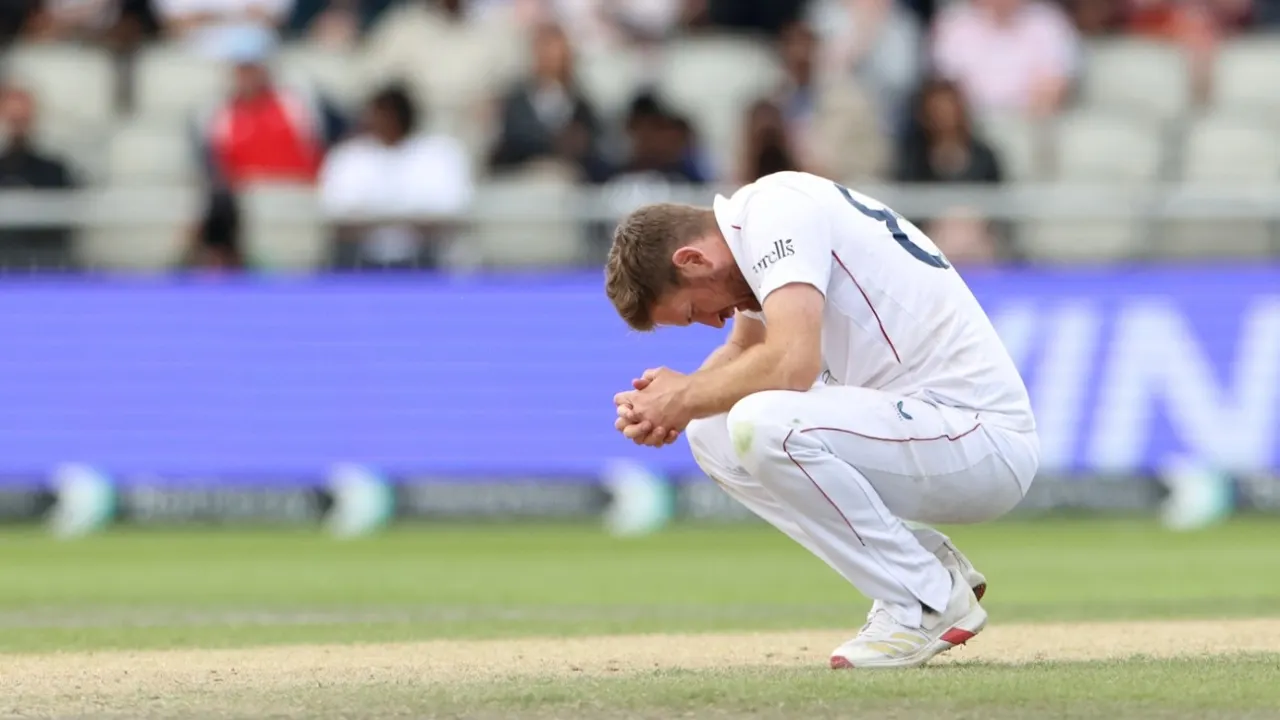England Frustrated by Dropped Catches as India Gain Upper Hand at The Oval

England were left frustrated and disappointed after a series of costly dropped catches on the second day of the fifth Test against India at The Oval. The hosts put down three opportunities in the first 15 overs of India’s second innings, allowing the visitors to build a 52-run lead with eight wickets in hand on a lively pitch.
Young Indian opener Yashasvi Jaiswal was the main beneficiary, riding his luck to a rapid 44-ball half-century. He was dropped twice—first on 20 by Harry Brook at second slip and then on 40 by substitute fielder Liam Dawson at long leg. Zak Crawley also shelled a sharp chance at third slip, missing out on dismissing Sai Sudharsan.
While the slip chances were firmly hit, Dawson’s missed opportunity stood out. Fielding in place of the injured Chris Woakes, he failed to hold on to a straightforward chance as Jaiswal top-edged a hook off Josh Tongue directly at him. Dawson, who had his sunglasses perched on his cap, appeared to lose the ball in the sunlight or under the floodlights, narrowly avoiding injury in the process.
“Of course, we pride ourselves on being very good in those sorts of areas, but it just didn’t happen,” said England assistant coach Marcus Trescothick. “You’re always frustrated when you miss opportunities. We all know how important they are… but it is what it is.”
The latest errors added to England’s ongoing fielding woes, with Crawley’s drop marking their 15th of the series—five fewer than India’s 20, according to ESPNcricinfo’s tracking. Fielding lapses also proved costly in the previous Test at Old Trafford, where Shubman Gill and Ravindra Jadeja capitalised on missed chances to produce match-defining innings.
Despite the setbacks, Trescothick insisted fatigue was not a factor, even after England’s innings lasted just 51.2 overs. “I don’t think that’ll be anything to do with it,” he said. “It just happens over the course of some days and some games.”
The assistant coach remained optimistic about England’s chances, describing the match as “evenly poised” heading into day three. He praised the pitch’s pace and seam movement, calling it the “extreme version” of what England typically prefer.
“We want pace on the ball, we want the ball to bounce and we want the ball to carry through,” Trescothick said. “When we’re batting, we can be aggressive… and when we’re bowling, if we get opportunities and we catch the edge, hopefully it will carry through.”
As the series reaches its decisive moments, England will be hoping their fielding sharpens—before more chances slip through their fingers.